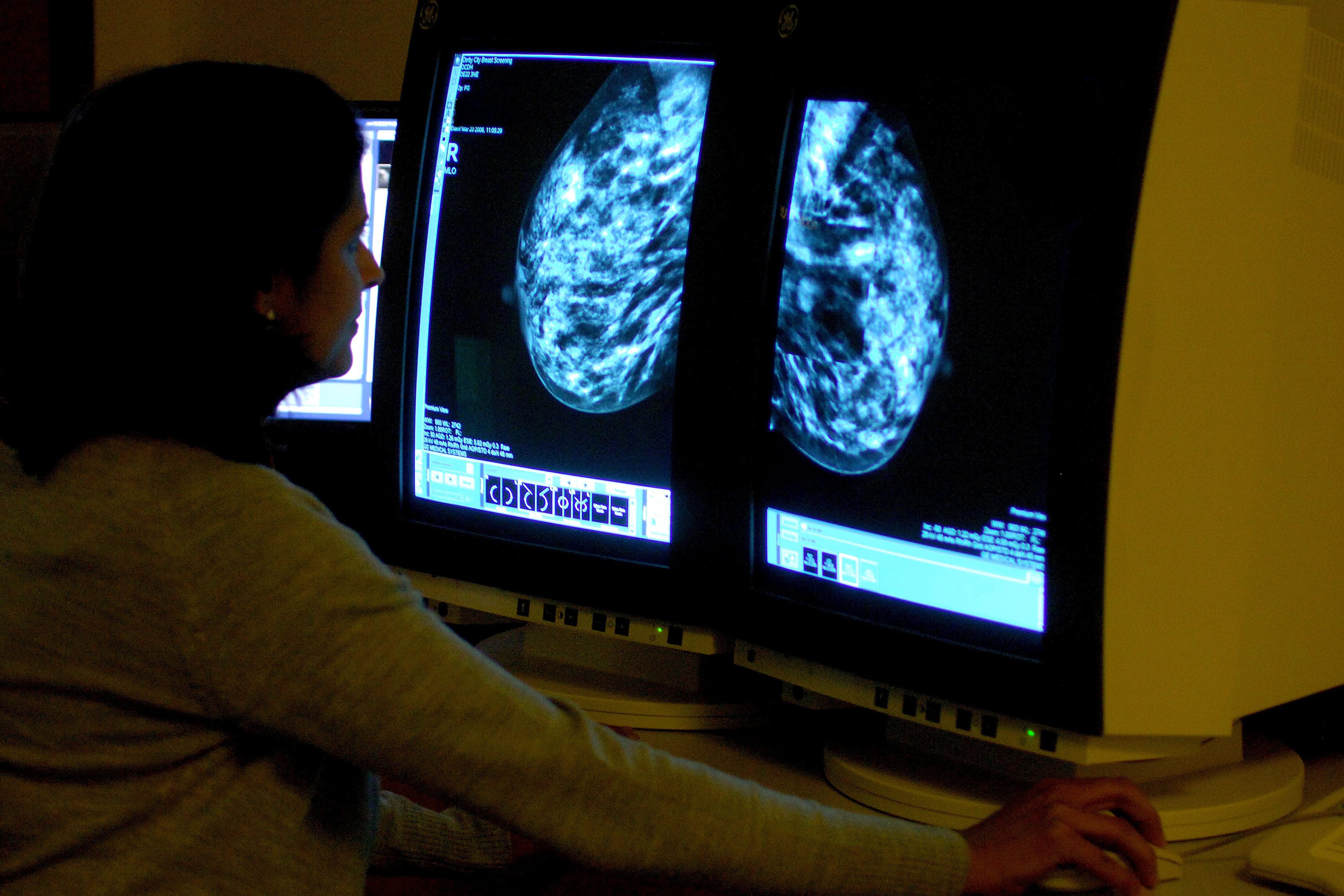Shortage of mammographers ‘could put women at risk’ – experts
The Society of Radiographers warned that the mammography workforce has reached ‘critical levels’.

Your support helps us to tell the story
From reproductive rights to climate change to Big Tech, The Independent is on the ground when the story is developing. Whether it's investigating the financials of Elon Musk's pro-Trump PAC or producing our latest documentary, 'The A Word', which shines a light on the American women fighting for reproductive rights, we know how important it is to parse out the facts from the messaging.
At such a critical moment in US history, we need reporters on the ground. Your donation allows us to keep sending journalists to speak to both sides of the story.
The Independent is trusted by Americans across the entire political spectrum. And unlike many other quality news outlets, we choose not to lock Americans out of our reporting and analysis with paywalls. We believe quality journalism should be available to everyone, paid for by those who can afford it.
Your support makes all the difference.Women with breast cancer are being put at risk because of a shortage of staff who can deliver specialist scans, leading radiographers have said.
The Society of Radiographers warned that a shortage of mammographers in the NHS in England is leading to late diagnoses and treatment delays.
All women in England aged 50 to 71 are invited for breast screening every three years.
Women can also be referred for scans if medics suspect breast cancer.
We urgently need to recruit more mammographers to meet the increasing demand on the NHS
These scans are carried out by a radiographer who specialises in breast imaging, also known as a mammographer.
But the Society of Radiographers said the mammography workforce has reached “critical levels”.
It said the latest vacancy rates among screening mammographers stand at 17.5% and among symptomatic mammographers – who scan women who find a lump in their breast, or those who have a family history of breast cancer – the vacancy rate is 19.8%.
Dean Rogers, director of industrial strategy for the Society of Radiographers, said: “Our members work incredibly hard in order to provide a comprehensive service, despite staff shortages.
“But there’s no way that a department with 20% – or higher – vacancies can do the work of a full complement of mammographers.
“And, unfortunately, this may mean that some women’s cancers are not detected as promptly as they should be. Inevitably, any delay in detection and diagnosis means that cases become more complex and harder to treat.”
He added: “We urgently need to recruit more mammographers to meet the increasing demand on the NHS.
“In order to specialise in an area such as mammography, radiographers need to be allowed to commit working time to additional training.
“But when radiography departments are so short-staffed, specialism in areas such as mammography becomes impossible: departments cannot spare radiographers for training.
“The NHS is broken, and the Society of Radiographers wants to help repair it.
“But part of the solution has to be a salary that encourages new radiographers into the profession – rather than driving them away.
“This needs to be coupled with a short-term workforce plan that delivers the numbers of radiographers the NHS needs – and thus the number of mammographers needed to ensure that breast cancer is detected and treated promptly.”
One mammographer in the North West, who did not want to be named, described how her role can be “relentless”.
“Mammographers are being asked to work harder for longer, taking on additional roles to fill the gaps, often with work-related musculoskeletal injuries.
“We do it because of the patients at the end of it. We come in early. We do longer hours. We give up our lunches. We don’t get any time back for it, but we do it because of the patients. It might only be 10 minutes for us, but it’s the whole world to them.
“But goodwill can only get you so far, because you’re exhausted.”
Commenting, Rachael Franklin, interim chief executive at Breast Cancer Now, said: “These shocking staff shortages in mammography in the NHS are contributing to delays in people with breast cancer receiving a diagnosis and accessing life-changing treatments that could give them the best chance of survival.
“Breast Cancer Now’s No Time to Waste campaign is calling for urgent investment into the breast screening programme to guarantee women’s access to screening, now and in the future.
“The new UK government must prioritise tackling the workforce crisis to ensure its sustainability, recruiting, training, retaining and supporting staff to ensure that cancer patients receive the care they deserve.
“Anyone looking for support or information about breast cancer can speak to our expert nurses by calling our free helpline on 0808 800 6000.”
This government will tackle these issues head on to ensure the NHS has the staff it needs to be there for all of us when we need it
A Department of Health and Social Care spokesperson said: “The NHS has been facing chronic workforce shortages for years.
“This government will tackle these issues head on to ensure the NHS has the staff it needs to be there for all of us when we need it.
“As we fix the NHS, we will provide an extra 40,000 operations, scans and appointments each week, to better ensure patients receive the diagnosis and treatment they need.”
The Long Term Workforce Plan for the NHS in England says say that the allied health professionals workforce – which includes radiographers – will increase by 71,000–76,000 members of staff by 2036/37 if the plan is implemented in “full”.
This includes increasing education and training places for allied health professionals by 19-25% by 2030/31.
The plan estimates that in the future some 25–50% of diagnostic radiographers will enter the workforce via and apprenticeship route.